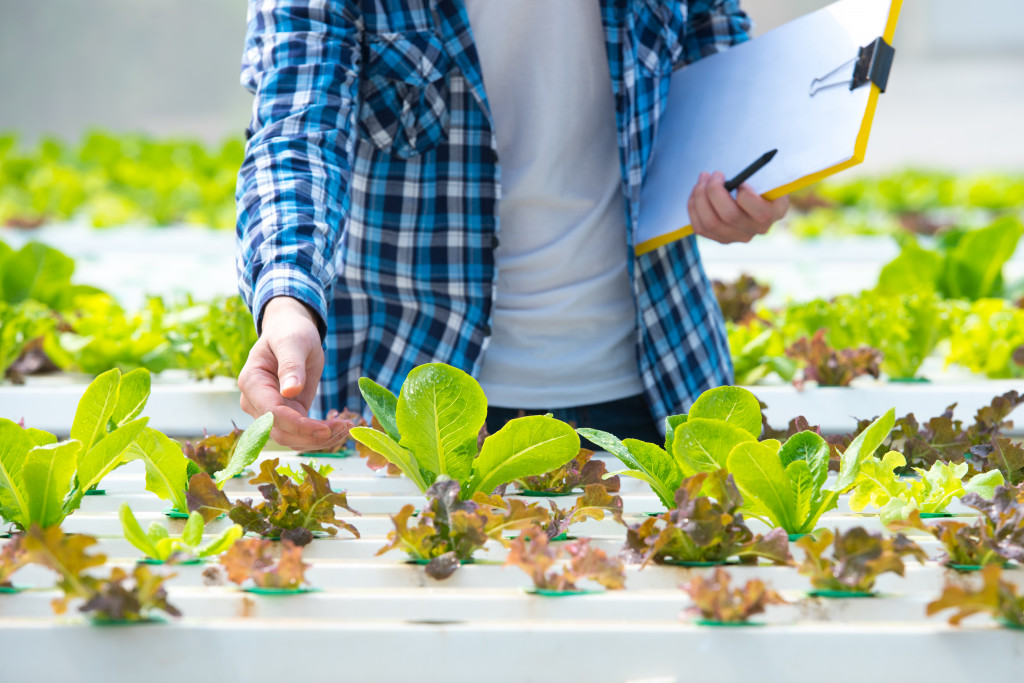Have you been on a farm lately? Farms are very different from the farms of yesteryears. Forget about what you see in TV and movies where farmers manually till the land. Farms have changed over the past five decades. They are bigger, and they have more yield. The livestock is also being raised differently. Chickens, cows, and pigs eat differently than they did before. What changed, and what happened? How did this change come about? The answer is simple: technology.
Like how technology changed the medical industry, it has also reshaped the agricultural industry, creating waves of new devices and equipment that can produce more finite sources. As the population grows, so does the demand for agriculture, the world’s primary source of food. The demands, however, have also changed. From basic ingredients for food, farms now must ensure sustainability, traceability, and safety. They have to produce more while ensuring the safety of what they deliver.
Monitoring
The use of drones in agriculture has been increasing. Drones for agriculture help agronomists, farmers, and agricultural engineers streamline their operations. This allows farmers to expand their scope as they can reach the far end of their land without needing to be there physically. But drones are not only utilized to “see” the borders of your farms. It is also for fertilizer management. It can collect data using sensors and GPS to identify the most suitable seeding prescriptions.
And because drone cameras produce high-resolution images, farmers and engineers can identify the areas of the farm that need more fertilizer. Drones also help reduce wastage and identify problems early on. And the best thing about using drones right now is their ability to irrigate and assess damage across the terrain after natural calamities.

Genetics and Breeding
Humans have been breeding animals for 10,000 years. They select animals to breed based on the climate. But this practice has limited the potentials of breeding animals. Today, animal geneticists use technology to identify genes that make animals more suitable for certain climates and domestic conditions. This is why it is not uncommon now to see poultry and cattle raised on the same farm. Farmers now have a better understanding of how to breed them in the same area.
Two technologies that have become quite controversial in the past but are driven by innovativeness are artificial insemination and embryo transfers. Though there are negative perceptions, these allow farmers to breed superior quality dairy and beef cattle. In fact, these have gained popularity in the industry.
Crop Genetics
In the past, farmers could only plant seeds resistant to the changes in the area’s climate. This limits the potentials of farms so that only certain crops can grow in one location. Over the years, scientists found out that seeds can be improved. They worked with germplasm to develop seeds with the characteristics needed to deliver the best yield regardless of the weather and soil conditions.
Farmers are now using traditional and modern crop genetics methods. The most popular of these is market-assisted breeding. This helps the seeds speed up the time it takes for them to reach the desired improvement, genetically speaking. What can be improved through genetically assisted breeding? Drought tolerance, disease resistance, herbicide tolerance, and insect resistance are some of the answers.
Pest Management
There was a time when farmers were reliant on synthetic chemicals to kill pests on the farm. Through research and scientific studies, they found out that these chemical fertilizers, pesticides, and herbicides are unsuitable for the crops and might be harmful to those who consume them. Over the years, the organic movement took place. This movement aims to walk away from the traditional use of chemical pesticides to a more natural way of managing rats, crickets, golden apple snails, nematodes, and other pests on the farm.
The best method is biological control, which is the use of predators, parasitoids, and pathogens to naturally remove pests on a farm. These usually occur naturally in an agricultural setting. However, in some cases that they don’t, farmers can import them or make a supplemental release that will trigger the production of these natural enemies.
Consumers stand to benefit from the way technology changed and reshaped the agricultural industry. They now have access to safer food and more sustainable farming practices. This ensures not only the continuous production of healthy and nutritious crops but also the protection of the environment from unsafe practices in farms. Technology still has a long way to go in terms of improving the agricultural industry, but crop and pest management, as well as the use of equipment such as drones, are a good start.

